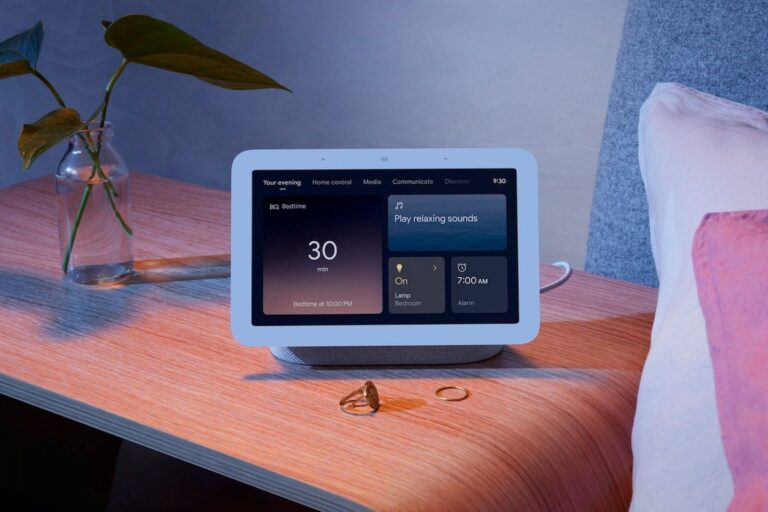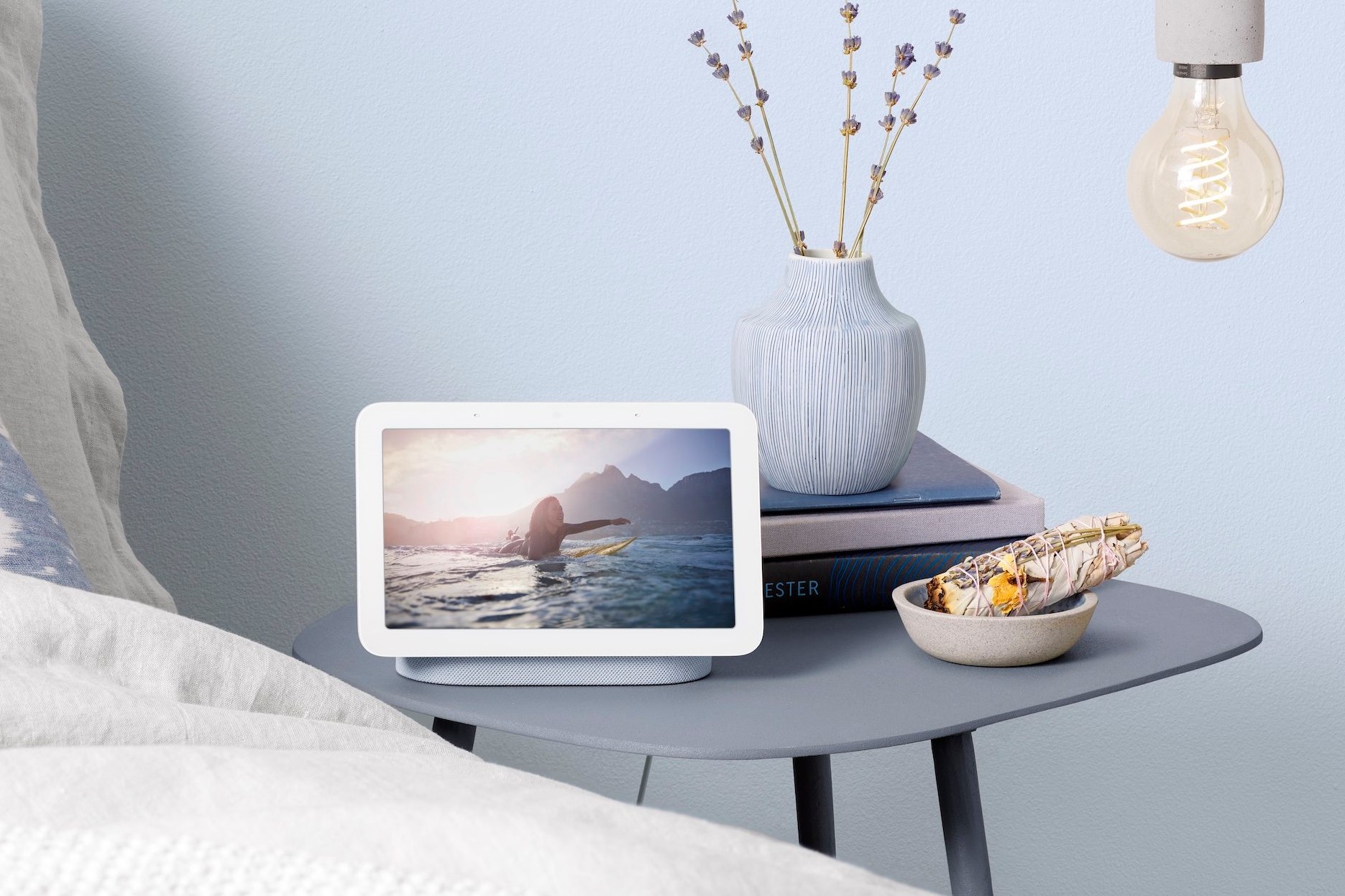The 2nd gen Nest Hub removes the need for a sleep-tracking wearable.
The new Google Nest Hub can track your sleep without a wearable

The Nest Hub, Google’s part-time smart home hub, part-time smart speaker, is getting an upgrade this year. At a glance, you might not notice much of a difference between the original 2018 Google Home/Nest Hub and the 2021 iteration. They look largely the same, particularly here in Australia, where it will only be available in the basic Chalk (White) and Charcoal (Black) colours. But the biggest changes to the new Google Nest Hub are on the inside. Thanks to Google’s motion-tracking technology, the new Nest Hub can monitor your sleep patterns without the need for a wearable tracking device, such as a Fitbit.
Google’s Sleep Sensing feature will provide users with analysis and insights based on the amount of sleep you’re getting as well as other nightly disturbances, such as coughing and snoring. It can even monitor your respiratory rate.
Pre-orders for the new Google Nest Hub are available now on Google’s online store and will set you back $149 and units are expected to ship from the 30th of March 2021.
How does Google’s Sleep Sensing work?
Unlike the 7-inch Google Nest Hub Max, the new Google Hub Nest doesn’t have the same in-built camera. Instead, it tracks gestures and sleeping using Google’s miniature radar technology, Soli. This is the same tech that Google used in its Pixel 4 smartphones for gesture-based commands. Well, that’s how it was advertised, I’m pretty sure people mostly used it to wave at their virtual pet Pokémon.
Soli knows when you enter the room, Soli knows how many people are in the room, Soli watches you sit, Soli watches you swipe, and now, Soli watches you sleep.
Soli, or Motion Sense, tracks the sleep of the person closest to display. The little radar can monitor your movement throughout the night, and can even get a read on your breathing. The new Nest Hub combines this with data collected from various other sensors that identify the sounds, light and temperature in your room as you sleep for a holistic analysis of your sleep and bedroom environment. All of that is then collated in the Google Fit app to show how many times per night your sleep is disturbed.

Sleep Sensing is free… for now
While new Nest Hub users will have access to its sleep tracking features out of the box, Google has specified that the Sleep Sensing preview will only be free “until next year.” It hasn't offered any more information on how much Sleep Sensing will cost after the first year, just that you will be alerted when it “becomes a paid feature” because everything is a subscription service these days, even sleep tracking.
What else is new in the Google Nest Hub 2nd gen?
Besides sleep tracking and quick gestures, there aren’t a lot of changes coming to the new Nest Hub. Google claims it can deliver 50% more bass than the original Nest Hub, which is nice.
Other than that, it’s a little taller (and a little heavier) than the Gen 1 Nest Hub, sports one additional far-field microphone, and has a couple of added sensors (Soli motion sensor and a temperature sensor) but that’s it. The display size and resolution remain the same.
Related Articles



